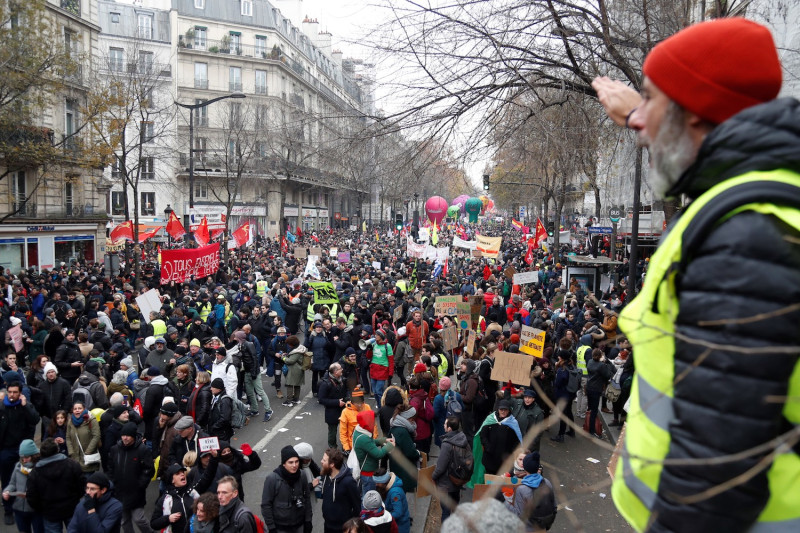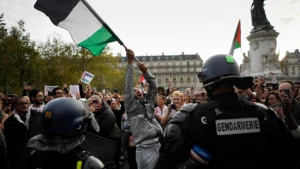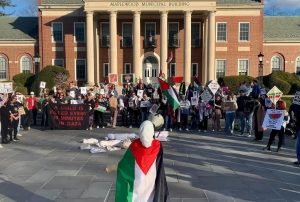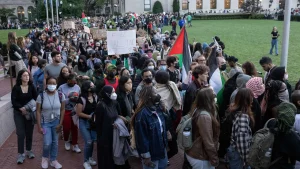“The world political situation as a whole is chiefly characterized by a historical crisis of the leadership of the proletariat.” With those words, Leon Trotsky began what has come to be known as the Transitional Program — the founding document of the Fourth International. Today, that statement is as true as when it was first written in 1938. At that time, it reflected the bankruptcy of the Third International, which had fully adapted to Stalin’s regime in the Soviet Union and was largely abandoning the fight for revolution around the world. Over the past 82 years, this crisis has been demonstrated many times, in many countries.
In response to this “historical crisis,” Trotskyists seek to build revolutionary parties that can fill the leadership vacuum. It is this approach that establishes Trotskyists as the heirs to, and Trotskyism as the revolutionary continuity of, Lenin and the Bolsheviks. Sometimes it is a lonely road. Other times, big opportunities present themselves to unite with other forces and work to move them in a revolutionary direction independent of the ruling class.
France offers us two compelling illustrations of the cost of failing to resolve the crisis of leadership. Both are tremendously instructive for revolutionary socialists, including in the United States.
In May 1968, France began a two-month odyssey into a semi-insurrectionary prerevolutionary situation that brought the economy to a virtual standstill. It began with student protests against capitalism, consumerism, and the U.S. imperialist war in Vietnam, which the French bourgeoisie supported. As police violently repressed the students, large sectors of the trade union movement in France called for sympathy strikes, which widened beyond anyone’s imagination at the time. Some 11 million workers went on strike, representing nearly a quarter of the entire population of the country. The government ceased to function, and government leaders feared a revolution. At a moment in late May, President Charles de Gaulle even secretly fled to Germany for a short period.
While a full history of the May–June 1968 events in France are beyond the scope of this article, it can be said that the central reason a social and political uprising of such magnitude did not become a revolution lies precisely in Trotsky’s words quoted above. Over the next decades, especially beginning in the early 1980s, the Keynesian economic paradigm that had ruled most of the world during the “30 glorious years” immediately after World War II — influencing economies through activist government stabilization and economic intervention policies — was rapidly supplanted by neoliberalism, with its focus on transferring as many economic factors from the public to the private sector. It was a period of intense attacks against the working class, in the form of privatizations, assaults on union rights, and the ripping apart of social safety nets, against which the proletariat proved largely impotent — another reflection of the crisis of leadership.
Recent Class Struggle in France
The second example from France traces its origins to the Great Recession that spread across the world beginning in 2008. By 2011, in response to the ruling class’s efforts to make the great majority of people pay for the economic carnage capitalism had caused, civil disobedience movements began to emerge in a number of countries, protesting corporate greed and wealth inequality. In Spain, for instance, the indignados occupied public squares for anti-austerity protests. In the United States, Occupy Wall Street and then the wider Occupy movement emerged. In France, there was a relatively small response, mostly attributed by bourgeois commentators to the fact that French youth expected to be able to elect a François Hollande of the Socialist Party as president the next year. In fact, it was an example of the crisis of proletarian leadership.
Hollande, a social democrat, was elected, and he proceeded to do the bidding of global capital. In particular, he introduced a program of labor market liberalization to make work more “flexible” — in a country with perhaps the most stringent labor code, with protections for workers, of any developed nation. Named after Hollande’s minister of labor, the El Khomri law aimed to make layoffs easier, reduce severance payments for laid-off workers, loosen restrictions on working hours, and slash overtime pay.
Opposition was swift and massive. Protests erupted, including one on March 31, 2016, that brought out 1.2 million people. During the same period, the Place de la République in Paris had become the scene of nightly occupations, where a popular assembly would be held to denounce France’s two main parties. Occupations then began to spread across the country, reaching more than 30 cities.
In 2017 rail workers went on strike to fight the government’s effort to privatize France’s state-owned railway company, which provides both passenger and freight services. And then the class-struggle process really accelerated in 2018 with the emergence of the Mouvement des gilets jaunes — the Yellow Vests movement. It began with a mass online petition in May of that year that protested government tax reforms that were crushing the working class and middle economic layers of French society with rising rents and higher prices for fuel and the “basket” of commodities that economists typically use to measure the cost of living. Nearly 1 million people signed the petition.
The nascent movement was composed primarily of people from sectors of the population largely neglected by the government and for whom neoliberal reforms over decades had done absolutely nothing. Their demands included lower fuel taxes, a reintroduction of France’s solidarity tax on wealth, and an increase in the minimum wage.
Later in the year, rising fuel prices in particular sparked protests — with participants wearing the high-visibility yellow vests typically seen in this country on municipal workers cleaning streets and parks, for instance. In France, drivers are required by law to carry one in their vehicles and wear them during emergencies. The protesters’ vests were meant to symbolize that France was in an emergency situation. At first the demonstrations took place in the middle of traffic roundabouts and were thus highly visible but not particularly disruptive, but they gradually became more militant. Blocking roads and fuel depots became the norm. Sometimes, there were pitched battles with police, whose use of force caused severe injuries and several deaths, which has been denounced in the mainstream media across the world.
Also, at the end of 2018, high school students began to protest the education reform plans of the president, Emmanuel Macron, that would almost certainly create greater inequalities among French students. When police arrested 140 student protesters outside a school in Mantes-la-Jolie on December 6, and video of the mass arrest emerged showing students kneeling with their hands behind their heads, it sparked outrage. And as December wore on, the Yellow Vests’ traffic blockades began to force the closure of commercial zones and urban chains at the height of the Christmas shopping season.
Class struggle continued through much of 2019, but it was largely the Yellow Vests movement, which continued to clash with police. As the year drew to a close, however, everything heated up again much more broadly. In mid-November, thousands of hospital workers took to the streets across France to protest cuts to the health system, with the slogan “Save public hospitals!” Two weeks later, French farmers staged a rolling roadblock with tractors around Paris, with 1,000 mobilizing near the Champs-Élysées and Arc de Triomphe. Then, on December 5, all hell broke loose. A general strike began against Macron’s brutal pension reform plan that, if enacted, would have overturned huge victories won by the French working class over decades. On that day, more than 30 unions went out, aiming to shut down the entire country. Most of the light rail lines around Paris were idled, and railway workers became central to the actions. On the first day, some 1.5 million people were in the streets across the country.1This article in the British Guardian newspaper gives a good flavor of the actions, with compelling photographs — despite underreporting the number of strikers.
It became the longest strike in French history, with huge support by the full French population (according to polls in January 2020). Within days of the strike’s launching, the state rail company and the entire Paris-area commuter transit system was on strike. Ballet dancers from the Paris Opera, whose own pension plan was under attack, struck and performed Swan Lake outside for the crowds. Union electrical workers cut power to large companies such as Amazon and, channeling Robin Hood, reconnected apartments of people in working-class neighborhoods who had been unable to pay their bills. On January 25, French firefighters joined the daily demonstrations. There were persistent violent clashes with police. “L’Internationale” was sung by marchers, who chanted “Revolution now!” and “Overthrow capitalism!”
This extended period of class struggle in France was somewhat atypical even for France, a country where militant strikes are more frequent than most other European countries. There were glaring signs of a working-class combativity that went well beyond the official leadership of the trade unions. Rank-and-file workers and Yellow Vests were more than willing to fight together, despite the resistance of the trade union bureaucracy. And when rail workers went out against privatization, the union leadership sought to impose a tactic limiting the strike to only three days a week; workers from the left wing of the trade unions battled the bureaucracy over this, demanding an indefinite strike. In the later rail strike that began in December 2019 amid the battle over pension reform, rank and filers created a coordinating committee of workers from the commuter and national rail companies to keep the strike going, building a genuine example of workers’ democracy and self-organization. A new vanguard was emerging.
Trotskyists in France are organized in the Courant communiste révolutionnaire (CCR, Revolutionary Communist Current). Along with others who are not members of the international Trotskyist Fraction, they constitute a revolutionary tendency within the Nouveau Parti anticapitaliste (NPA, New Anticapitalist Party), and also publish our sister site Révolution Permanente. They were important leaders of the railway workers in these actions, and especially of the coordinating committee. Having built strong connections with the Yellow Vests, the Trotskyists were instrumental in linking the struggle against the pension reform to the demands of that movement.
The eruption of protests in the United States after the cop murder of George Floyd extended to France, as it did to other countries around the world, and the anti-racist movement in the first months of 2020 also saw an upsurge. These Trotskyists had also played a key role in bringing together striking trade unionists with the Justice for Adama Traoré committee, which had been organizing since the young Malian French man was killed in the custody of police in 2016.
The arrival of Covid-19 in France has, of course, been a significant factor in these actions abating, as the government-mandated quarantine eventually took all but “essential” workers off the streets. Even still, anti-racist demonstrations continued, and the chant of “we are anti-capitalists” rang out in many of them.
The social uprisings of the past several years have had enormous potential, and the French Trotskyists have intervened accordingly. They have fought to advance the movement programmatically and toward the democratic self-organization that is necessary both to win gains in the short term and for the ultimate goal of revolution. But, again, the primary limitation has been exactly what Trotsky had written in 1938: the “historical crisis of the leadership of the proletariat.” The union bureaucracy and reformist left hamstrung and waylaid the movement at every possible turn. It wasn’t that the movement could not advance toward more revolutionary politics because of an unwillingness to wage that fight. Rather, without a revolutionary party with mass influence, it was impossible to alter the relationship of forces with the ruling class.
Through all this, where was the NPA — the party with “anti-capitalist” in its very name? Why was it incapable of filling the void of revolutionary leadership? Answering these questions requires that we review a bit of the party’s history.
Origins of the NPA
The NPA’s founding in 2009 was, in large part, the result of a long-term slide from revolutionary politics to centrism by one of France’s main self-characterized Trotskyist organizations, the Ligue communiste révolutionnaire (LCR, Revolutionary Communist League), which functioned as the French section the United Secretariat of the Fourth International (USec) — the international organization that resulted from the 1963 reunification of some of the world Trotskyist movement that had split 10 years earlier.
An understanding of centrism and how it is counterposed to revolutionary politics is one of the keys to understanding the NPA’s founding, evolution, and current state. Centrism is defined in the revolutionary Marxist movement essentially as straddling revolutionary and reformist politics. It typically manifests itself as revolutionary in words but reformist in action, the words aimed at covering up the actions that represent betrayal. More often than not, those actions are justified with an appeal to “realism” — which translates into an abandonment of principle and genuinely independent class struggle and an adaptation to the bourgeoisie in one or another form. As Trotsky once wrote, “How many times have we met a smug centrist who reckons himself a ‘realist’ merely because he sets out to swim without any ideological baggage whatever and is tossed by every vagrant current. He is unable to understand that principles are not dead ballast but a lifeline for a revolutionary swimmer.”2Trotsky, “Sectarianism, Centrism and the Fourth International,” October 22, 1935.
A year earlier, Trotsky had spelled out, “In the sphere of ideology centrism leads a parasitic existence” and drew attention to the fact that “a centrist readily proclaims his hostility to reformism; but he does not mention centrism; moreover, he considers the very definition of centrism as ‘unclear,’ ‘arbitrary,’ etc.; in other words centrism does not like to be called by its name.” Further, with respect to how they function in the workers’ movement, he described centrists as “inclined to substitute for a principled policy personal maneuvering and petty organizational diplomacy.” He also confronted the difficulties of precisely characterizing centrism — which he wrote “of necessity always has a ‘conjunctural’ character”:
One must understand first of all the most characteristic traits of modern centrism. That is not easy first, because centrism due to its organic amorphousness yields with difficulty to a positive definition: it is characterized to a much greater extent by what it lacks than by what it embraces, secondly, never has centrism yet played to such an extent as now with all the colors of the rainbow, because never yet have the ranks of the working class been in such ferment as at the present time. Political ferment, by the very essence of the term, means a realignment, a shift between two poles, Marxism and reformism; that is, the passing through the various stages of centrism.3Trotsky, “Centrism and the 4th International,” February 23, 1934.
What does all this have to do with the founding of the NPA? At an international level, the USec had concluded more than a decade earlier that while “there is no lack of reasons for keeping the flame of revolutionary hope burning,” the “main trend” in the workers’ movement was one of “adaptation and compromise in the name of realism” — echoing the words Trotsky had used to describe centrism.4The full document is worth reading for a unique look into the rhetorical hoops through which centrists must jump in their efforts to couch their reformism and abandonment of principle in pseudo-revolutionary terms. See United Secretariat of the Fourth International, “Building the International Today,” Documents of the 14th World Congress, 1995. The USec internationally, however, decided to discard the principles Trotsky had characterized as “a lifeline for a revolutionary swimmer” against centrist tendencies and opted, in essence, to liquidate its national sections in favor of a “broader regroupment with other left organizations” — which it characterized with all sorts of possibilities in terms of the form that might take, but that in country after country really just meant entry into other much larger parties — “ex”-Stalinist parties, social democratic parties, and even a “bureaucratic Maoist conglomerate” in one case — that lacked revolutionary programs.
The orientation presented a difficulty for the LCR leadership, despite its support for it. Unlike its sister organizations in other European countries, the LCR had no amorphous “regroupment”-like organization into which it could fold, and the social democratic Socialist Party and the Communist Party were engaged in their own regroupment efforts with other nonrevolutionary forces. So the LCR decided to launch a new “broad” party of its own and issued a call for a new party with an anti-capitalist program. As Virginia de la Siega (a member of a minority tendency within the LCR at the time) explains, “The call was heard, fundamentally, by mobilized sectors of the middle class and the working class that were rebelling against neo-liberalism and its consequences. For those of us who believed (and continue to believe) in revolution, the great challenge of the NPA would be to raise the consciousness of those sectors to make them anti-capitalist and revolutionary. For that we counted on the continuity of the struggles and our understanding of the Founding Principles.” They spelled out a pro-socialist platform and rejected the idea that there can be any “good productive capitalism,” including so-called “green capitalism.”
She continues, explaining that when the LCR launched the process of founding the NPA in 2008, there was tremendous process and a clear internationalist focus:
[M]any looked enthusiastically to this party that wanted to be built from below, and in which revolutionary Marxists could converge with thousands of workers, students, housewives, people who were not yet revolutionary, but who sought to change the world in which they lived.
After a national campaign that lasted a few months, the Founding Congress took place on February 6, 2009. There were 630 delegates, elected by the 9,123 members organized in 465 committees throughout France. To reaffirm the internationalist character proclaimed in the Founding Principles, there were 100 delegations from parties and international organizations. The deliberations were opened by a member of the UGTG (General Union of Workers of Guadeloupe). Guadeloupe, one of the last French colonies, had been paralyzed for five weeks by a general strike. The February 7 session began with the interventions of a representative of the Popular Front for the Liberation of Palestine and an Israeli anti-Zionist militant.
The Trotskyists were there at the beginning. Our CCR comrades saw the founding of the NPA as one of those paths to a revolutionary party, a way to regroup forces that could be moved in a revolutionary direction without carrying the baggage of those who were decidedly centrist. Yes, the LCR leadership brought along that baggage, but the response to the LCR’s call was the more important part of the calculus. Workers who were not members of any political organization began to join. Newly radicalizing youth from the campuses and immigrants from the peripheral neighborhoods began to flock to the NPA. Working-class people who would never characterize themselves as “revolutionary” were anxious to have such a party. Here was an opportunity to defend revolutionary principles and potentially build a revolutionary leadership to prepare for the next uprising in France.
The Crisis of the NPA Today
The NPA emerged as a pole of attraction for people in France, especially youth and young workers, who were being won over to revolutionary politics at the very moment they were engaged in genuine class struggle. That’s precisely why the Trotskyists of the CCR decided to become part of the NPA. But a decade later, the NPA has no more than 2,000 active members — largely the result of the ex-LCR leaders and their maneuvering to hold on to a “relative majority” as the party rank and file moving further to the left and new anti-capitalist forces being attracted during each of the phases of struggle described above. The gap between the reformism of the existing leadership and the direction of these rank and filers became untenable.
The centrist leadership of the NPA has spent the better part of a decade accommodating the trade union bureaucracy and erecting obstacles to unity of the different working-class forces rocking French society, all the while masking its position with revolutionary rhetoric. It has failed to lead the radicalizing masses down a path toward a more revolutionary perspective. And now, with even the pretense of a majority threatened at the next party congress, the centrists are engaged in a new effort to destroy the party through a split before it can actually fulfill the promise the CCR comrades saw at its launching.5For a more detailed explanation of this impending “split,” see Révolution Permanente, “Statement on the Le Monde Article Regarding an ‘Implosion in the New Anticapitalist Party’” (August 3, 2020).
Daniela Cobet, a comrade of the CCR, explained at a recent session of the NPA’s “summer school” what is going on right now in the runup to the NPA’s next party congress and spelled out the perspective of the Trotskyists inside the NPA — which is to relaunch the NPA as an explicitly revolutionary party:
What would be the objectives of the next congress? For us it would be wrong to disconnect the discussions of the congress from the discussions on the new situation that has opened up. This congress is not going to take place in just any kind of situation, but one that has been profoundly shaken by an economic crisis that will lead to a social catastrophe probably unprecedented since the 1930s. It is one taking place, particularly in France … on a terrain that is an accumulation of struggles since 2016, during which the mass workers’ movement has undertaken a series of experiments that augur great social explosions, or at least the possibility of them, in the next period. …
Perhaps in the past we did not agree on elements of orientation, but today it is a question of thinking about what our characterization of the political situation is … and the resulting tasks for revolutionaries. Only then will we be able to define the contours of the party revolutionaries need. Today, instead of doing that, splitting up the NPA, going backwards to a small organization of a few hundred militants, less established, less young, is no solution to be able to move forward.
Cobet referred to a characterization of the NPA by Olivier Besancenot, the LCR’s 2007 presidential candidate and now the NPA’s main public spokesperson, as “only a tool” and added, “The party is only a tool, indeed, but it is a very important tool without which the revolution is often impossible or in any case leads to defeats that are very costly to our class. From this point of view, it would be a great pity to break the imperfect NPA tool without being certain we will have a better, sharper, more efficient tool to intervene in the class struggle.”
Some Lessons for the United States
The experience of the NPA offers some valuable lessons for the multiple paths to building revolutionary parties and resolving the “historical crisis” Trotsky spelled out in 1938. The forces that can be won to revolutionary politics evolve in many ways. It is rarely, if ever, a linear process to which those already committed to revolution can simply adhere.
Thus, in the United States, we have two instructive examples. One is the Socialist Party (SP) in the late 1930s, and how American Trotskyists oriented to a radicalizing left wing, composed mostly of youth but also representing a significant group of trade unionists, within that reformist party. Entering the Socialist Party en masse to engage with this growing group within that party, the Trotskyists managed to win over hundreds and hundreds to revolutionary politics and bring them out of the reformist SP to help found the American section of the Fourth International.
The other is the Democratic Socialists of America (DSA) in the recent period, whose membership has grown tremendously in recent years as more and more people in the United States — young Americans in particular — openly embrace socialist ideas. Of course, the two examples are far from the same. The SP was a classic party of social democracy; the DSA is not. And the DSA and the NPA have major differences. For instance, the NPA has never supported a candidate like Bernie Sanders, the DSA’s choice for president in the most recent Democratic Party primary season, who is committed to nothing more than reforming capitalism and who has generally supported all the projects of American imperialism outside the U.S. borders.
A number of comrades of Left Voice became DSA members to engage with radicalizing young people, as the Trotskyists had done in the late 1930s, to go through the experience with them and attract them to revolutionary politics.
That is where the similarities with the NPA end. As Cobet explained regarding the CCR’s membership in the NPA,
Our interest, as far as the comrades of Révolution Permanente are concerned, is not to have a “bus shelter” where we can continue to build our fraction. … On the contrary, we have been proposing for a year now the project of transforming the NPA to a revolutionary party that brings together different traditions of the revolutionary movement, but that can also welcome into its bosom the best elements of the vanguard that has emerged in the struggles since 2016.
And through that participation, the CCR comrades have striven at every juncture to be the “best builders” of the NPA, especially by helping forge a strong, combative coalition that brings together both unionized and precarious workers, as well as between the trade union movement and the anti-racist movement. In particular, it is the Trotskyists of the CCR who fought the NPA’s LCR leadership when, rather than working to build a genuine united front with the Yellow Vests to confront the French capitalist state directly with common demands, they instead dismissed the movement as “petty bourgeois” and “right wing.”
These are all elements of the genuine revolutionary perspective that the Trotskyists bring to the NPA. This is what it looks like to fight for a party program based on class independence from the capitalists.
As it did in France, the question of a revolutionary leadership — and an independent socialist party of the working class — is emerging as decisive in the United States. Months of struggle around the pandemic, the assaults on essential workers, cop killings, and the coming economic catastrophe that the ruling class will try to make workers pay for — all these pose the question of how to build something more than a reactive fightback. How do we convert the emerging vanguard and the broader forces moving to the left into an organization that can have mass influence and help solve the “historical crisis of the leadership of the proletariat”?
These are burning issues faced by revolutionaries today. It is not hyperbole to say that how they are resolved will ultimately spell the difference between a future of socialism or barbarism.
Notes
| ↑1 | This article in the British Guardian newspaper gives a good flavor of the actions, with compelling photographs — despite underreporting the number of strikers. |
|---|---|
| ↑2 | Trotsky, “Sectarianism, Centrism and the Fourth International,” October 22, 1935. |
| ↑3 | Trotsky, “Centrism and the 4th International,” February 23, 1934. |
| ↑4 | The full document is worth reading for a unique look into the rhetorical hoops through which centrists must jump in their efforts to couch their reformism and abandonment of principle in pseudo-revolutionary terms. See United Secretariat of the Fourth International, “Building the International Today,” Documents of the 14th World Congress, 1995. |
| ↑5 | For a more detailed explanation of this impending “split,” see Révolution Permanente, “Statement on the Le Monde Article Regarding an ‘Implosion in the New Anticapitalist Party’” (August 3, 2020). |












